What a brand stands for is what its space should communicate.
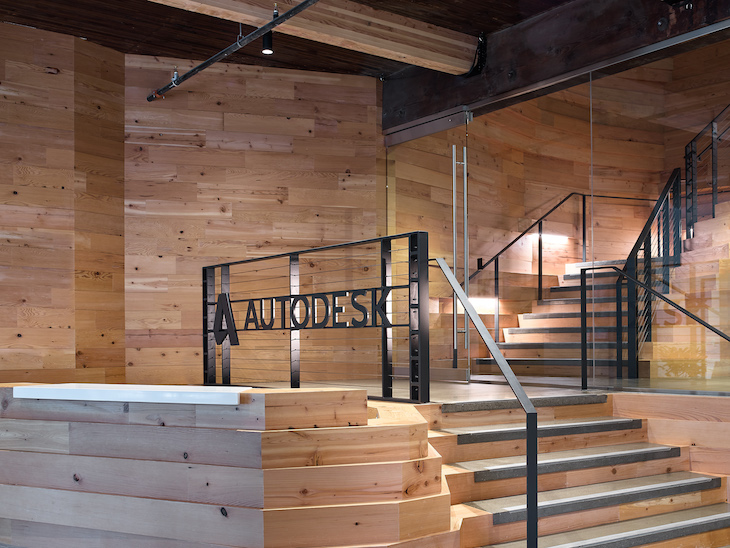
Workplace design tells a story. It’s an opportunity to create an environment that demonstrates brand. Threaded throughout the story, and shown within every design element and expression, is also a reflection of how a company prioritizes its brand values.
Across industries — each with disparate lines of business, processes and corporate principles — successful workplace design is as much about function as it is about innovation. Nowadays, many companies want it all in workplace design, accounting for the diverse generational spectrum of the people doing the actual work in a given space. But to have it all does not mean to have it all equally. During the design process, decisions always have to be made. To help guide those, companies must first look at prioritizing their values in order to envision a space that is conducive to employees delivering upon the brand promise.
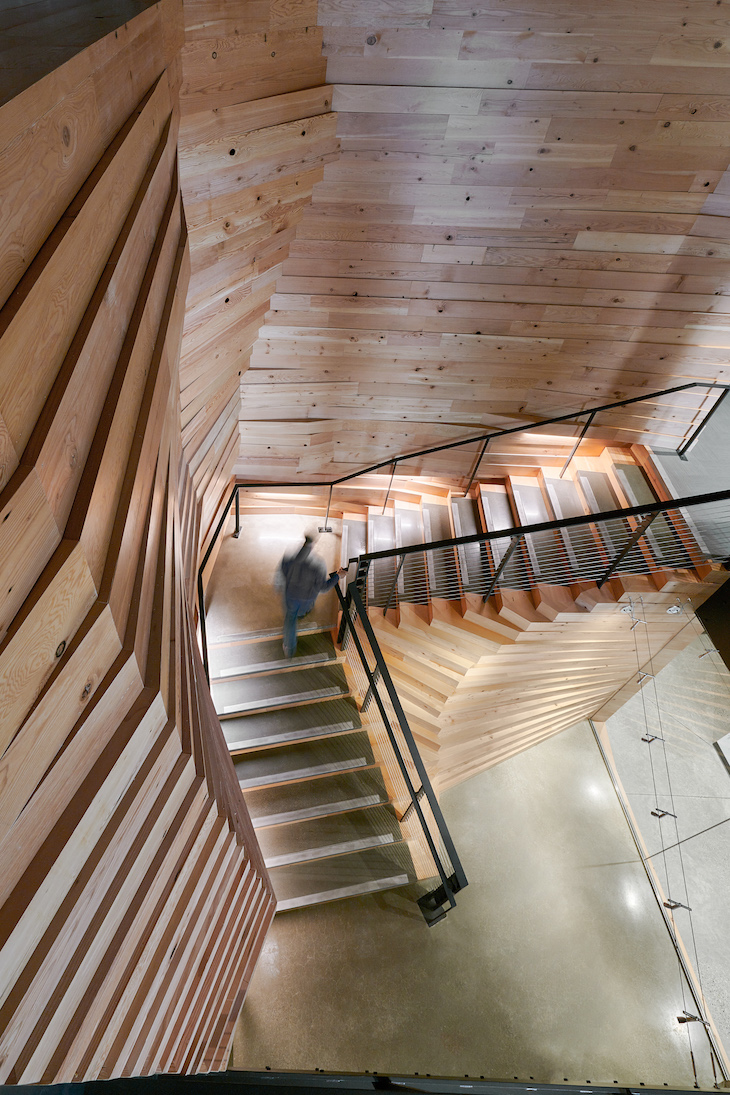
Design Brand Values Authentically
Workplace design should be an expression of brand credo — a natural progression and integration of values. It can be a catalyst for myriad changes, avoiding a fabricated reality of who a brand wants to be. Striving for change, and actually taking the steps toward it through design, is one thing, but to inauthentically design a space, whether for style, award wins or client impressions, is a disservice to employees.
When beginning a project, it’s best to determine where a company focuses. Is there a commitment to culture, to spark employee attraction and retention? Is there a need to increase efficiency, to bring in more business? Is there a desire for more cross-team collaboration, to inspire new ideas? A company that values maintaining current business strategies over fostering new approaches will likely be less inclined to make bold changes or introduce new technology. Whereas a brand that places high value on its employee talent will want to incorporate elements that make workers feel welcomed and important.
Certain design elements can express where a brand places worth:
- Thoughtful technology integrations via displays or interactive screens enhance a company’s placed importance on the cutting-edge, and may even reflect the brand’s type of business.
- Creative graphics on walls, floors and ceilings can literally and figuratively reflect a brand’s creativity and design-centric thinking, where style is of the utmost importance.
- Utilization of materials or colors related to genre, mood or type of business demonstrate a company’s focus on feeling or purpose, and its desire to motivate that with visitors.
- Selection of furniture with flexibility, mobility or agility options can reflect the company’s culture for comfort, wellness and health
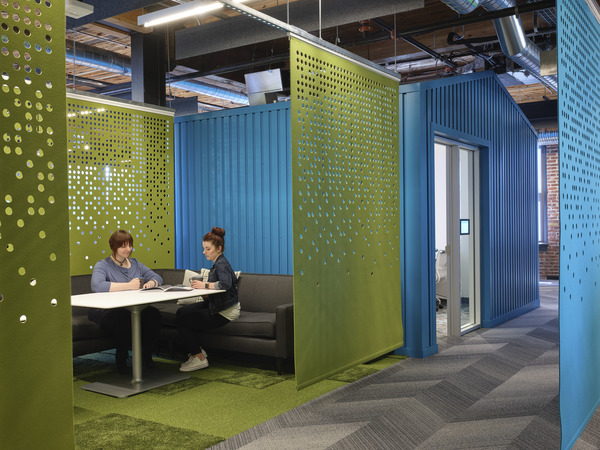
As designers, we always want to understand who the company is, or what its brand stands for, and what the goals are for the workplace. But knowing where the brand places its value helps ensure that design is authentic and not forced. If guests are greeted by an open and non-traditional reception, one that embraces interaction, this signals the company has a collaborative nature. If an environment inspires spontaneous collaboration, then the company reflects openness to new and creative ideas, too. Design cannot be a fabrication of who a brand wants to be; it needs to be authentic to who it already is, or is willing to grow into.
Incorporate Wellness Everywhere
It can be argued that workplace design now must account for wellness, and how it’s done is determined by how a company assumes its effect on employees and work product. It might also be contended that today, wellness in the workplace should be a company’s most-prized value, as it’s more than fun amenities; it’s about how work gets done, and how people feel while doing it.
Space allocation and planning needs to be thoughtful in arrangement to promote the most in productivity and comfort for the individual. Addressing stress points, workplace demands and a space’s changing dynamics throughout the day is about finding synergy between function and design. All spaces, regardless of how formal, or how casual the work style, need to be grounded in technology support, thermal and acoustical comfort and ergonomic care.
To prioritize wellness:
- Bring in the comfort of natural light and access to fresh air, perhaps through a movable wall, operable windows or outdoor space, as the design allows.
- Bring nature indoors either through materials, finishes or physical representation.
- Inspire mental alertness with amenities that encourage moments for reflection and mindfulness.
- Design access to nutritional food, exercise and fitness and optional furniture solutions that allow for agile movement throughout the space.
- Design lighting that supports our bodies circadian rhythms
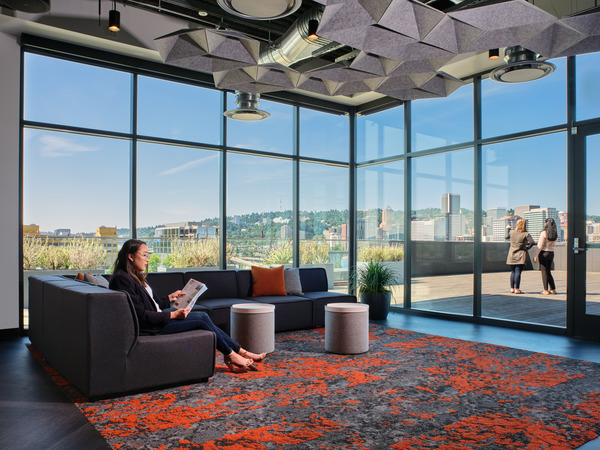
Among burnout culture, creating workplaces that not only encourage wellness but also nourish it communicates from the company to its employees that importance is placed upon them as humans, and not just as workers. It’s a true demonstration that people matter, and something as designers we need to prioritize in our projects.
Design For The Individual Among the Collective
We all know today’s workforce is more diverse than ever, with workplace flexibility now a requirement more than a perk. While collaborative and team spaces send the message that a company values open communication and innovation, individuals needs to be cared for, too. Contemporary design allows for every space to be a work environment, emphasizing how we tie into each other through agile work options and, of course, technology.
The individual needs space to move within — different moods to shift between to re-energize and refocus. Brands that prioritize this during the design process are communicating to employees they care about every person on an individual level — the type of work they do and how they work best.
To show value for both the collective and individual:
- Design meeting spaces that allow for individual comfort (think varying seating and standing options) and acoustic privacy so employees can retreat as needed.
- Create large common areas that allow for more casual collaboration and give individuals a place to move during the day, to work outside their common project circles
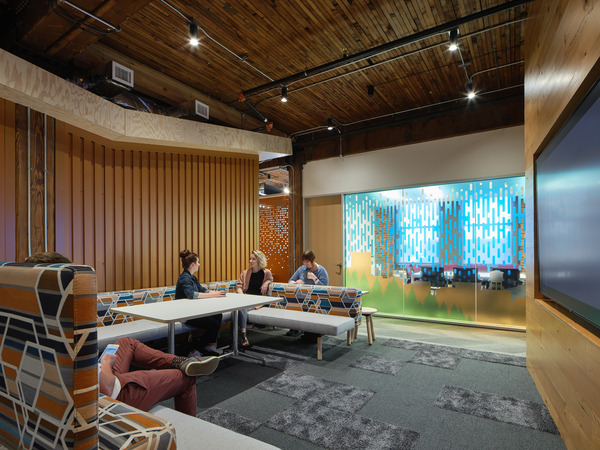
Of course, workplace design is a powerful tool in brand expression. Determining, and living by, values is how brands are made. Leading by values in the design process creates an environment authentic to the story companies are telling outside of their walls and actually emoting inside of them.
Just as the workplace becomes an expression of the brand, it also becomes an expression of the employees who work there. Today, work and life are increasingly blurred, as are the spaces where each is done. So for employees, walking into work every day should feel like walking into a space made for them, where the setting is an expression true to their own values.


nice article, thank you so much.